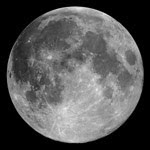Not all of those 2,613 units attracted the Feed-in Tariff (FiT) payments. I lost a week's worth at the start while the bureaucracy surrounding FiT application worked it's way through. Nevertheless, the FIT's earnings for the year have been about £1,044. I say 'about' for two reasons. Half of my eligible units, 1,250 of them attracted an additional Export Tariff of 3 pence which adds £37. Also, both the Export Tariff and the FiT were increased by the inflation rate on 1 April. However, the people looking after the payments have no way of knowing what my reading was on that day so I guess they will apply the higher rate for my next reading which means that a few units from before April will attract the higher rate. Note that not only are these payments index-linked, they are also tax exempt.
Average generation per day was 7.16 units across the course of the year, pleasantly clear of the 6.79 target I was hoping to exceed.
The year prior to the panels, we used 8,816 units of electricity in our house - sons have a habit of leaving their stuff powered up! This year, primarily due to the power provided by the panels, our consumption has fallen by 2,180 units to 6,636 units which represents a saving of about £220 pounds at current rates. Adding that to the income above, we ought to have realised £1,300 by virtue of having the panels. Three major factors will affect that in future years. The price of retail electricity is bound to rise, increasing the savings that can be made by using power when the panels make it available; for example, coaxing the family to run items like the dishwasher when the Sun is out. The FiT payments will rise along with the Retail Prices Index. The panels are expected to deteriorate at about 0.9 per cent annually.
Now for the big, important chart from my spreadsheet:

When I first started this, I tried to guess what shape this graph would have. I thought that mid-winter would still yield a couple of units daily. The effect of weeks of snow on the panels was not expected, essentially turning them off for days on end. I suppose I expected an approximation to a sinusoid waveform but I now think that, over and above the snow, the alignment of my roof amplifies the effect of the lowering of the Sun's passage over the sky. Now I really understand why life goes to sleep over the winter. The prime source of energy for life, the Sun, basically all but disappears.
For the future, I am going to keep track of my panels' performance. My overall average figure will now become an annual average. A new figure I will be generating is a comparison of current generation with the previous year with a running total of whether I've generated more or less this year. Everything else being the same, I should see a very slight decline. However, given the variability of the Scottish cloud cover and a good summer, figures could easily be higher.


